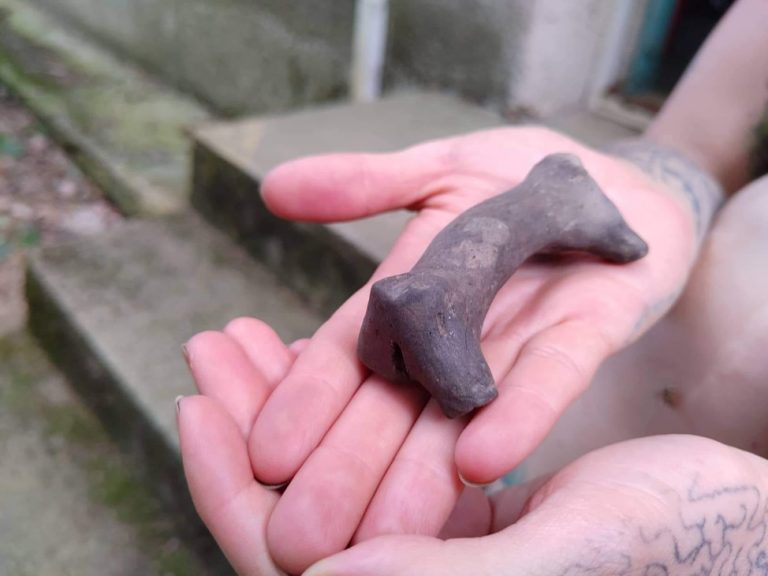Staff and first-year students from the Institute of Archaeology and Museology at MU’s Faculty of Humanities have discovered a unique clay sculpture of a ram dating from the Neolithic period and an Iron Age Hallstatt tomb filled with pottery, jewellery and meat at the Těšetice-Kyjovice site in the Znojmo district. Photo credit: muni.cz
Brno, July 29 (BD) – The archaeological excavation of the Early Farmers’ House in Těšetice-Kyjovice, where archaeology students traditionally conduct their first mandatory field practice, brought surprises and interesting finds. The second day of work at the site was marked by the discovery of a Neolithic ceramic sculpture, a clay animal figurine. Based on the details of the head and the stylized representation of the sexes, the animal can be identified as a ram. The importance of this find lies mainly in the fact that it may be evidence of activities associated with fertility symbolism.
The discovery was made during the excavation of a dwelling, in a nearby construction pit used to extract clay for house construction. The figurine was discovered by two students: one from Masaryk University and the second a young archaeologist from Cardiff University who was participating in the archaeological research as part of her internship.
The species of the figurine was identified by archaeologist Miriam Nývltová Fišáková of the Institute of Physiology at the MU Faculty of Medicine. “Statuettes or sculptures are not found very often at sites, and when they are, they are unique. This ram sculpture is also unique because it was deliberately damaged,” explained Peter Tóth, research leader and assistant professor at the Institute of Archaeology and Museology at MU’s Faculty of Humanities.
People often shaped clay figures of animals which lived in their immediate vicinity, and which they normally came into contact with. The tessellated ram figurine probably has deformed horns, limbs and testicles, which could be evidence of the ritual during which the sculpture was destroyed. “Since live animals had a high value in the society of the time, the deliberate destruction of the sculpture may have symbolised its killing as part of a ritual. In addition to its sacred purpose, the figurine may also have been used for everyday purposes, such as as a child’s toy,” said Tóth. He added that shrines or temples where ritual activities may have taken place are not yet known to central European archaeologists, but are relatively common in southeastern Europe and the Near East. Thus, cult activities could have taken place inland from the settlements, near houses, in specially designated areas.
Then, in the last week of work at the site, archaeologists discovered another interesting feature: a Hallstatt tomb from the Iron Age, in which the deceased had a rather rich group of pottery, bronze jewellery, an iron knife, and meat for his final journey.
In the laboratories of the Institute of Archaeology and Museology, experts will now examine the individual finds, both the ram sculpture and the items from the tomb. “We expect that the laboratory analyses will only make our hypotheses more precise,” said Tóth. “Těšetice, where research has been ongoing for more than 50 years, has confirmed its polycultural character even after several years.”







